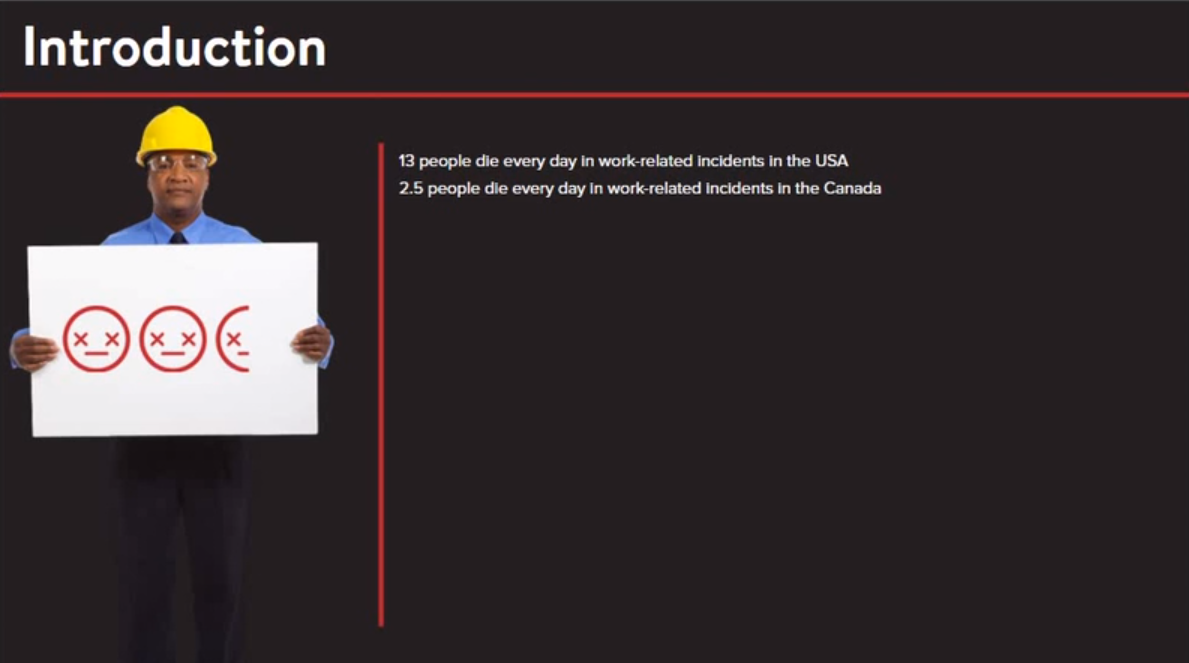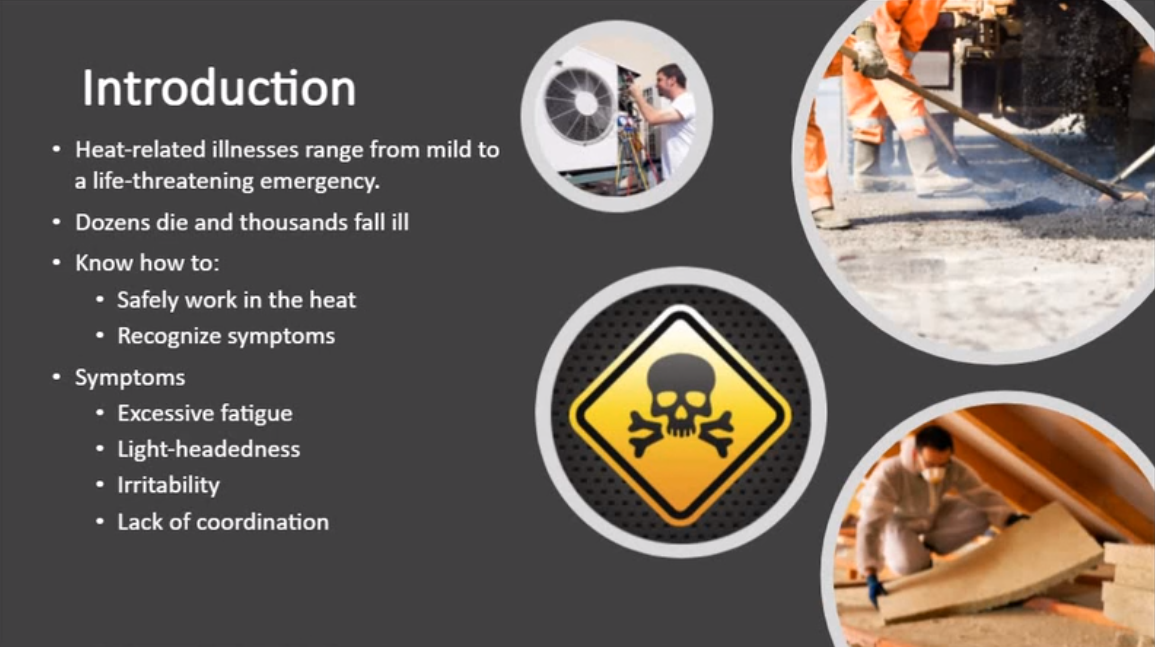You’re a manager. You supervise employees, achieve company goals and adhere to policies. What do you do when an employee files a complaint, or harassment claim? How do you handle the effects of a claim on the accuser, the accused, and your team?
Preventing Workplace Harassment – Manager Edition
$24.15
Description
Learning Objectives
- Define workplace violence.
- Identify job tasks and occupations at increased risk for workplace violence.
- Identify the categories of perpetrators of workplace violence.
- Identify precautions to help prevent workplace violence.
- Recognize warning signs of violent behavior and how to respond to them.
- Identify the appropriate response to a violent event occurring in the workplace.
- Identify what to do after a violent incident takes place.
According to the Occupational Safety & Health Administration (OSHA), workplace violence is defined as violence or the threat of physical violence against workers. It can occur at the workplace, or anywhere an individual is performing his or her job away from the work site, and can range from threats and verbal abuse to physical assaults and murder. In addition, Active Shooter events are catorgorized as workplace violence.
Sometimes, it is domestic abuse that creeps into the workplace, or disgruntled current or former employees with an agenda. Other times, heated arguments between colleagues turn violent, or customers threaten and physically intimidate workers. Workplace violence looks different on each job, but there are common standards for deterring incidents of violence at work.
Workplace violence includes physical attacks that cause or are intended to cause injury or harm to a person or property. It is not limited to physical assault. It includes acts of aggression such as stalking, threatening remarks stating intent to harm, or behavior that indicates lack of respect and worth of an individual, such as verbal abuse, bullying, harassment, and emotional abuse.
Workplace violence also includes domestic violence that spills over into the workplace, brandishing a weapon while at work or on company property, and acts of revenge by current and former employees.
Training and education are key factors in responding to violence in the workplace. An employee trained in how to avoid and handle workplace violence will have a much greater chance of coming out of a violent situation unharmed. Sometimes certain acts of violence are beyond anyone’s control, such as the attack on the St. John’s nurses. In these types of situations, training on how to quickly get to safety is crucial. In other instances, training can help employees deter and alleviated a potentially violent situation before it escalates.
When training your workforce, it’s important to incorporate assets like engaging visuals, current statistics, and periodic knowledge test questions to help workers retain important safety information. Integrating a series of videos that teaches safety lessons through progressive storytelling can also play a huge factor in knowledge retention.
The most vulnerable workers are those who:
- Exchange money with the public;
- Deliver passengers, goods, or services;
- Work alone or in small groups during late night or early morning hours;
- Work in high-crime areas;
- Work in healthcare and social services
Work in community settings and homes where they have extensive contact with the public:
- Gas and water utility employees
- Phone and cable TV installers
- Letter carriers
- Retail workers
- Taxi drivers
- Types of Perpetrators
Criminal Intent:
A Type I perpetrator has no legitimate relationship with the business or its employees, although he, or she, may pretend to be a customer to gain entrance into the workplace. Theft is usually the motive and often a deadly weapon is involved, which greatly increases the risk of fatal injury. Crimes committed as a result of criminal intent include robbery, shoplifting, and trespassing. Most workplace homicides fall into this category.
Customer
A Type II perpetrator has a legitimate customer relationship with the business and becomes violent while receiving service from the business. Type II perpetrators include any group the business provides services for, such as customers, patients, students, and inmates.
Worker on Worker:
A Type III perpetrator has some employment-related involvement with the affected workplace such as an employee, past employee, or prospective employee who attacks or threatens another employee in the workplace. Type III events usually take place after a series of increasingly hostile behaviors from the perpetrator. Approximately 7% of all workplace violence homicides are attributed to worker-on-worker hostile events.
Personal Relationship:
A Type IV perpetrator is not an employee or former employee and does not have a relationship with the business but has a personal relationship with the intended victim who is an employee. This is typically domestic violence following the victim into the workplace. The perpetrator may be a current or former spouse or partner, a relative, or a friend.
Common safeguards against workplace violence include:
- Avoid traveling alone into unfamiliar locations or situations whenever possible.
- Carry only minimal money and required identification into community settings with extensive contact with the public.
- Secure the workplace.
- Limit cash on hand.
- Use cellular phones and hand-held alarms.
- Use the buddy system.
- Follow off-site visit policy.
Personal Practices
- Keep your vehicle locked at all times.
- When leaving or returning to your vehicle, try to walk with others.
- Have your keys readily available as you approach your vehicle.
- Lock all doors immediately upon entering your vehicle.
- If you must work late or alone, make sure you know how to get assistance quickly if it becomes necessary.
- Make sure someone knows where you are.
- Keep your work area well lit and remain alert to your surroundings.
- Be extra cautious when using rest rooms, stairs, and elevators.
- Let someone know when you leave the workplace.
- Know and follow your company’s policy for responding to strangers in the workplace.
Not all training is equal. With SafetyNow, learners and leaders will notice the difference in value:
- Quality: Professionally-researched and designed using the latest mobile and responsive technologies
- Convenience: Works instantly on any device, desktop or mobile
- Time savings: What learners need to know, not extra fluff or legalese
- Reporting: Consistent, instant compliance records available anytime
- Support: Customer and learner support included at no charge
- Any Learning Management System (LMS) Use with any SCORM, AICC, xAPI, TinCan, HTML5, or other LMS (learning management system).
- Any Device Desktop, laptop, tablet, or mobile phone – it simply works, everywhere.
- Engaging Professionally-developed, including an on-screen host and modern, easy-to-understand text, media, and voiceovers.
- Unlimited Attempts Each module can be taken as many times as required to get a passing grade. Unlike our competitor’s courses, if you get an answer wrong, you are redirected to the exact eLearning segment you struggled with… you don’t need to go through the entire module again, just the one part you need a refresher on.
Only logged in customers who have purchased this product may leave a review.













Reviews
There are no reviews yet.